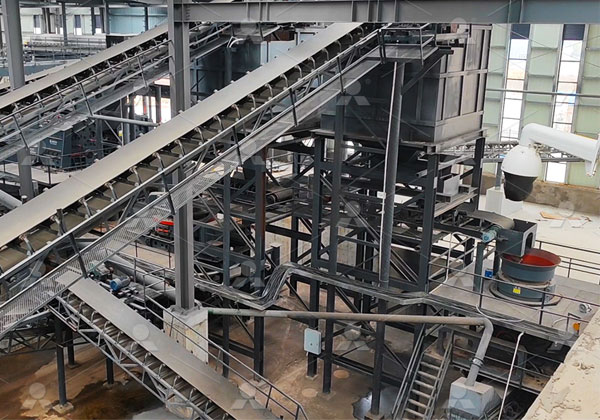The stone crushing production line is an essential process for construction and infrastructure development, comprising various machines and equipment that work together to convert large rocks and stones into smaller, usable aggregates. This comprehensive set of machinery is designed to meet the demands of the construction industry and ensure the sustainable use of natural resources. In this article, we will delve into the components of a complete stone crushing production line and highlight its importance in modern construction.

Primary Crushing Stage:
The stone crushing process begins with the primary crusher, which plays a crucial role in reducing the large rocks to a size that can be handled by the subsequent machinery. Jaw crushers or gyratory crushers are commonly used for this purpose. These robust machines can handle large feed sizes and provide a uniform product size distribution, essential for downstream processing.
Secondary Crushing Stage:
Once the primary crushing stage is complete, the stone fragments are further reduced in size during the secondary crushing process. Cone crushers and impact crushers are commonly employed for this task. Cone crushers are particularly suitable for high-hardness materials, while impact crushers excel at producing cubic-shaped aggregates.
Tertiary Crushing Stage:
In some cases, a tertiary crushing stage is included to produce even finer aggregates. Vertical shaft impactors (VSIs) or high-pressure grinding rolls (HPGRs) are used to achieve this level of reduction. Tertiary crushers contribute to producing a diverse range of aggregate sizes, accommodating various construction applications.
Screening Stage:
After the crushing stages, the crushed materials undergo screening to segregate them based on their sizes. Vibrating screens or trommel screens efficiently separate different aggregate fractions. This process ensures that only the required sizes are sent to the next stages, reducing wastage and maximizing efficiency.
Sand Making Stage:
In specific construction projects, sand production may be necessary. Sand making machines such as vertical shaft impact crushers are employed to convert large rocks into fine sand particles, providing an essential component for concrete and masonry work.
Conveying and Storage:
Throughout the production line, conveyors facilitate the movement of materials between different stages. They help optimize workflow and minimize manual handling, improving efficiency and safety. Additionally, storage systems, such as silos and stockpiles, ensure a continuous supply of aggregates to downstream processes.
Environmental Considerations:
Modern stone crushing production lines are designed with sustainability in mind. Dust suppression systems and enclosed conveyor belts help minimize dust emissions, ensuring a healthier work environment and reducing the impact on nearby communities. Moreover, energy-efficient machines and process optimization techniques reduce the overall carbon footprint of the production line.
Automation and Control:
To achieve higher productivity and consistency, stone crushing production lines incorporate automation and advanced control systems. Automation helps monitor and control the entire process, allowing operators to optimize performance, adjust settings, and identify potential issues swiftly.

Contact us Now to find out what we can do for you next project !